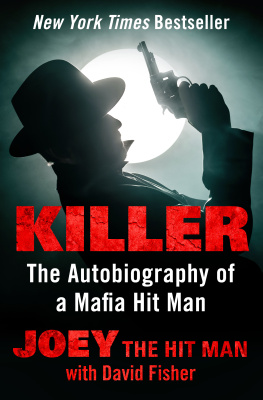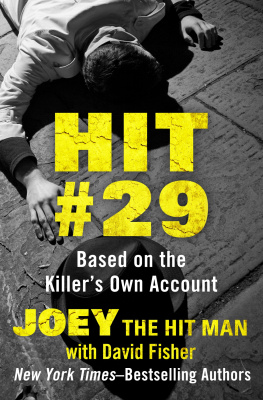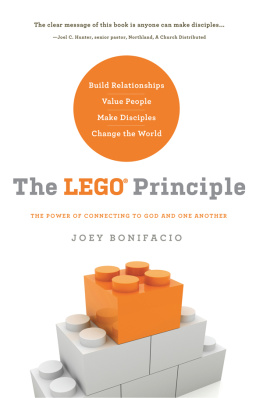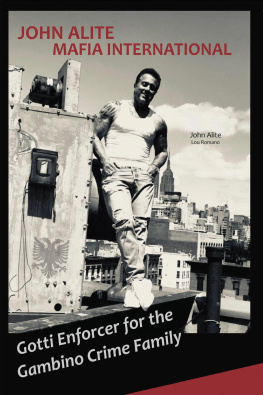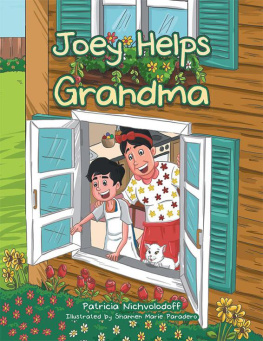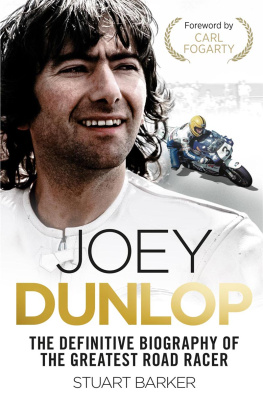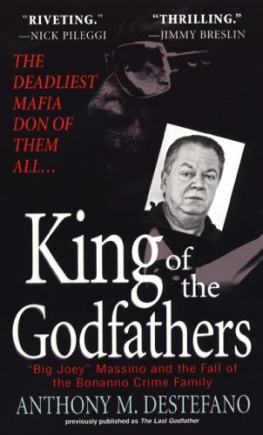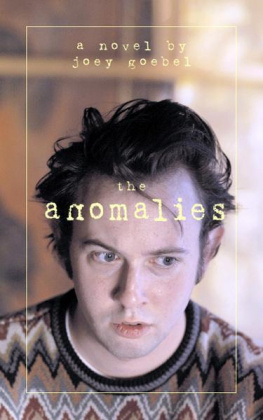Killer
The Autobiography of a Mafia Hit Man
Joey the Hit Man with David Fisher

CONTENTS
INTRODUCTION
As I watch actor James Gandolfinis Tony Soprano move with anger, angst and tempered joy through his daily life, I cant help but remember Joey Black, the Mafia hit man with whom I worked to write this book almost three decades ago. Joey killed people. It was one of the ways he made his living.
Before I met Joey my knowledge of the crime world was a conglomeration of half-digested facts and feelings gathered from The Untouchables, The Godfather, newspapers, a few books, magazines, rumor and the six oclock news. When I was first approached to work with a mob killer, I admit to having felt some apprehension. But the strongest emotion was curiosity. I had no idea what an honest-to-goodness, 100-percent-guaranteed, double-your-money-back killer would be like, and I wanted to find out.
I met Joey for the first time outside the office of Playboy Books editorial director Ed Kuhn. He stepped into the room dressed smartly in a black leather jacket half-zipped covering a white V-neck T-shirt. His black hair was neatly slicked back 1955-style. Physically he was a bit shorter than the stereotype, but his huge shoulders, deep chest and muscular arms were what I expected. Whattya say, kid, he boomed, and stuck out his hand. Sorry Im late, but I was trying to find a barber. Mine got killed last week. Those words did nothing to make me more comfortable, but he went on to add that a drug addict had done the job in the midst of a mugging, which relieved me some.
Eventually Joey began to tell me his life story. For me the story went on day after day for a number of months. I gathered bits and pieces in New York, Los Angeles, a day in Chicago, and over numerous lunches and dinners, through countless recording sessions. The result was this book.
My book, as he referred to it, was never meant to be another in the long list of startling exposs which promise to name names and reveal where the bodies were buried. There are real names here and violent events but in, I hope, a different context. The book was intended to portray the day-to-day operation of organized crime; how a gambling operation is set up, how to place a bet, pick a number, find a shylock, smuggle narcotics, hijack a truck, A Consumers Guide to Organized Crime, Joey once joked.
It is also an American success story. The autobiography of a killer. Joeys story. When you finish this book, you will have an understanding of how his mind worked. How killing can become a business, and be separated from other parts of his daily existence. In these pages Joey detailed his past and present, his loves and hates, his frustrations and successes. Only his fears are missingfrom the first day we met he consistently denied allowing himself any.
Over the months Joey and I became friends. At times I would listen to him spew forth tale after tale of hitting this guy in the head or threatening to make a crowd out of that guy and lose all patience. But I began to separate the man I knew, and liked, from the violent man we were dispassionately dissecting. Watching him play with my young nephews, I found it hard to believe that he was capable of the things he was telling me.
But there were other moments. In a Los Angeles restaurant, we were with some friends of mine and one of them, a man about my age, asked him what he would do if somebody doubted he was who he said he was. Joey picked up a sharp fork and jammed it against my friends neck, driving his head uncomfortably upward. Id ask him to say it again. It was a nasty moment.
But those moments were rare. I began to believe that this book was meant to serve as Joeys penitence. He saw it quite differently, of course.
He expressed many reasons for wanting to do the book. None of them were entirely convincing, none of them were entirely beyond belief. Members of organized crime have been made out to look like animals, he told me in his Bronx accent, and actually were not such bad people. We are the caterers of society. We just give people what they want. We dont set out to hurt anybody. I want people to understand that.
At another point he spoke of retiring. I think maybe Ive had enough, Id like to get out.
I think there were other reasons for his wanting the book. Joey saw the traditional mob structure crumbling around him. The traditional oath of silence was being broken every day, and he wanted to get his piece of the action, even though publicly he could never admit his mob identity. In one of his most chilling publicity appearances he was interviewed on television by the late David Susskind, wearing a bag over his head with eyeholes cut out, to protect his identity. (Susskind hosted hundreds and hundreds of shows, but his interview with Joey the Hit Man remains one of the three most requested shows he ever did.)
Finally, this book is Joeys monument. It testifies to the fact that he was here and he survived. It was ego-fulfilling, and Joey had a very big ego.
The words and thoughts in this book are his. We worked with a tape recorder, and I did my own transcription and editing. I have been careful to keep my feelings out of Joeys mouth. There are many things in this book I dont agree with. At one point, for instance, he says, The mob never created an addict. I dont believe that at all. We argued about it, but in the book it is precisely as he said it.
I also knew only those things about him that he wanted me to know. I cannot count the hours we spent together, yet I never knew his real name, where he lived, who he hung out with, what his wife looked like, where he went after he left my apartment. I do know that he was everything he said he was. My introduction to him was through a highly regarded crime reporter, a man who has known Joey for years. Other experts on the world of crime brought in during the vetting process confirmed that Joey was, in fact, the real article.
Although we disagreed over almost everything, from politics to organized religion, I found myself more amazed than upset by this man. He was one of the more complex individuals I have known. He was a vicious killer, but he was also outgoing, affable, gregarious, funny, egocentric, sometimes unreasonable but usually friendly. In a macabre moment, I dubbed him The Happy Hit Man, which is what he was.
The facts in the book are also here as Joey related them to me. At the very beginning he explained he didnt believe anyone could really be an expert on the subject of organized crime. Theres too much going on, he said, and no one can see it all or know all the facts. There are things that go on that even Carlo Gambino doesnt know about.
Im only an expert in those areas Ive worked in. The mob deals in stolen securities, for example, but I never have, so I dont know anything about that area. Anything I told you would be hearsay, and this book is going to be fact. I questioned some of his facts. At one point he told me there was a $50-million shylocking outfit operating in New York City. I didnt believe it. A few months later the police broke up a ring which had more than $75 million on the street. And, when I expressed my doubt about his ability to find someone quickly in a big city with very few clues, he offered to prove his ability to me.
A friend of mine was going to Detroit to visit his wifes family. Joey and I made a friendly bet. I hired him to locate this man in Detroit. All I told him was when he would be arriving. We didnt reveal his wifes maiden name, where they were married, or any other data I considered useful.

